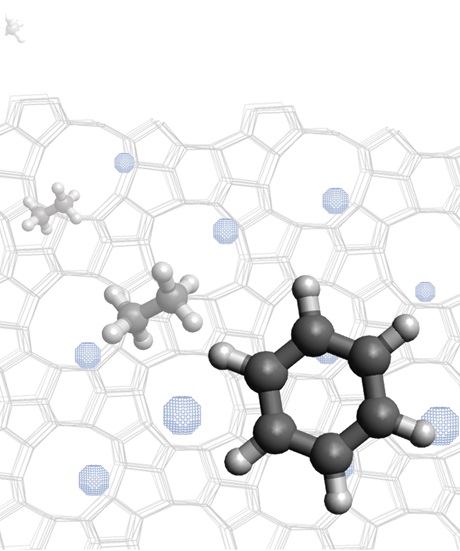The world is struggling with different challenges such as depletion of fossil fuels, growing gap between energy demand and production, and most importantly emergent environmental issues. Therefore, alternative environmentally friendly resources for production of chemicals and energy are necessities. However, the transition and utilization of new resources requires development of novel technologies.
Thus, the aim of this thesis was to develop new efficient catalysts and investigate their performances in different energy and chemical production processes such as CO2 hydrogenation to methane, methanol-to-hydrocarbons, and dehydroaromatization of ethane. In particular, MFI structured zeolites with 3-dimensional channels including ZSM-5 and silicalite-1 were employed in the presented works. Different morphologies of MFI zeolites were synthesized, characterized and applied in catalyst design. More specifically, zeolites were used as catalyst support for metals and/or as solid acid catalysts in solid phase for aforementioned chosen reactions.
The deactivation challenge in each process and catalyst was different. Thus, the cause of deactivation was attempted to be considered in designing a more active, selective and deactivation-resistant catalyst. This was achieved by for instance addition of second mesoporosity (hierarchical zeolite), zeolite surface modification, metal encapsulation and metal stabilization using sulfur. As a result, catalytic performance including selectivity towards desired products, conversion and life-time were improved for the developed catalysts.
In summary, this thesis offers promising solutions for catalyst deactivation by designing novel catalysts for three important processes that potentially provide more environmentally friendly approach for production of fuels and energy.

Bi-functional zeolite-encapsulated metal nanoparticle catalyst to convert ethane to aromatics such as benzene, toluene and xylenes in one step.